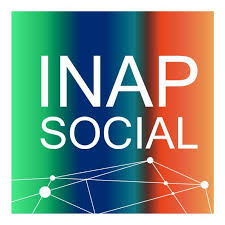Regulation and quality of liberalized public services
DOI:
https://doi.org/10.24965/gapp.vi32.382Keywords:
Public services, liberalization, quality of public services, regulation, evaluationAbstract
The liberalization of network industries (public utilities: telecoms, electricity, gas, water supply, transport and postal services) stand implicitly for a promise of fostering the competition, forcing prices down and improving the quality of services delivered to consumers. However, a preliminary assessment shows that quality of services might be the «hidden cost» of the liberalization process. During the last few years, theoretical and empirical research has focussed more intensively on how regulators ought to use more suitable mechanisms to introduce quality in incentive regulations. In this paper I first examine some of the complex problems that arise when we want to define what «the quality of service» is in network industries, given that this is a multidimensional issue. Second, I review the different approaches used to adjust the quality of service to consumer preferences. Third, I focus on the mechanisms used more frequently by regulators to reduce the asymmetric information problem and to introduce quality of service in the incentive schemes. Fourth, I raise the question of the need to create institutions to develop a systematic process of quality definition and outcome assessment. Finally, I conclude that all that can be measured get better, while any thing that cannot be measured get worse.Downloads
References
Chunrong, A. I. y Sappinton, D. (2005), «Reviewing the impact of incentive regulation on U.S. telephone service quality», Utilities Policy 13: 201-210.
Arrow, K. (1973), «Social Responsability and Economic Efficiency», Public Policy 21: 303 318.
Ajodhia, V. y Hakvoort, R. (2005), «Economic regulation of quality in electricity distributions networks», Utilities Policy 13: 211-221.
Baldwin, R. y Cave, M. (1999), Understanding regulation: theory, strategy, and practice. Nueva York: Oxford University Press. CMT (1999), Informe a la Secretaría General de Comunicaciones sobre el proyecto por el que se regulan las condiciones de calidad en la prestación de los servicios de Telecomunicaciones, de 29 de julio.
Comisión Europea (2002), Nota metodológica para la evaluación horizontal de servicios de interés económico general. Comunicación de la Comisión al Consejo, al Parlamento Europeo y al Comité Económico y Social: COM/2002/0331 final.
Comisión Europea (2004), Resultados en el mercado de industrias de red que prestan servicios de interés general. Primera evaluación horizontal. Bruselas: Comisión Europea.
Comisión Europea (2005), Fourth benchmarhing reporto on the implementation of the internal electricity and gas market. Bruselas: Comisión Europea.
Defensor del Cliente de Endesa (2004), Informe de actividades del primer ejercicio, http://www.endesa.es/Portal/es/gobierno_cor-porativo/junta_general_accionistas/ano_2005/Documentacion_2005.htm.
Emons, W. (1997), «Credence Goods and Fraudulent Experts», Journal of Economics 28 (2): 107-119.
Giannakis, D. et al. (2003), «Benchmarking and incentive regulation of quality of service: an application to the UK electricity distribution utilities», Cambridge Working Papers in Economics 0408. Cambridge y Massachussets: The Cambridge-MIT Institute.
Gibson, S. (2005), «Incentivising operational performance on the UK rail infrastructure since 1996», Utilities Policy 13: 222-229.
Hirschman, A. O. (1977), Salida, voz y lealtad. Respuestas al deterioro de Empresas, Organizaciones y Estados. México: Fondo de Cultura Económica.
Hirschman, A. O. (1984), De la Economía a la Política y más allá. México: Fondo de Cultura Económica.
Holt L. (2005), «Utility service quality. Telecommunications, electricity, water», Utilities Policy 13: 189-200.
Le Grand, J. (2003), Motivation, Agency and Public Policy: of Knights and Knaves, Pawns and Queens. Oxford: Oxford University Press.
Lin, Ch. (2005), «Service quality and prospects for benchmarking: Evidence from the Peru water sector», Utilities Policy 13: 230-239.
Nelson, P. (1970), «Information and Consumer Behauvior», Journal of Political Economy 78: 311-329.
Nuñez, J. (2001), «A simple model of self regulation», Economics Letters 74: 91-97.
Nuñez, J. (2002), «¿Puede la autorregulación proteger contra el fraude y la negligencia?», Revista Perspectivas 6 (1). Santiago: Universidad de Chile.
OFGEM (2003a), Guaranteed and overall standars of performance, http://www.ofgem.gov.uk.
OFGEM (2003b), Open letter on Ofgem’s electricity distribution customer service reward scheme, http://www.ofgem.gov.uk.
Sappington, E. M. (2005), «Regulating service quality: a survey», Journal of Regulatory Economics 27: 123-154.
Spulber, D. (1989), Regulation and Markets. Cambridge (Massachussets): MIT Press.
Young, D. (1974), «Exit and Voice in the Organization of Public Services», Social Science Information 13: 49-65.
Williams, G. (2002), Airlaine Comtetition: Deregulation´s Mixed Legacy. Londres: Ashgatt.












